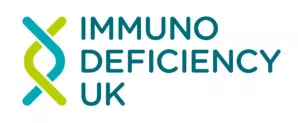Summary
This information is designed to help answer questions families may have about the condition called haemophagocytic lymphohistiocytosis (HLH).
The content has been produced jointly between Immunodeficiency UK, Great Ormond Street Hospital (GOSH) and the Great North Children’s Hospital and in association with Histio UK.
Haemophagocytic lymphohistiocytosis (HLH) is a rare immune disorder where the body reacts inappropriately to a ‘trigger’, usually an infection. Specialised white blood cells (known as T-cells and macrophages) become over-activated, causing severe inflammation and damage to tissues such as the liver, spleen and bone marrow.
HLH is a rare disease and it can be difficult to diagnose because many of the symptoms can mimic severe infection or other conditions.
There are two main types of HLH: primary (‘familial’) and secondary. Primary HLH is caused by a genetic mistake (mutation) that can be passed on from parent to child. In primary HLH, mutations usually affect the ability of white blood cells to clear infections.
It can be inherited either in an autosomal recessive manner, which means that a child has to inherit the faulty gene from both parents to develop the condition, or in an X-linked manner, which means that the faulty gene is carried on the X chromosome and only affects boys.
Sometimes mutations can just happen, by chance, and are not inherited from parents. More information about genetics is available in our booklet ‘‘Genetics aspects of primary of immunodeficiency’.
Secondary HLH is not inherited but rather develops as a result of another illness, usually a widespread infection or immune disorder.
Primary HLH usually shows up within the first year of life, while secondary HLH typically develops later in childhood, although it can appear at any age. Both types can present in the same serious and life-threatening way.
The symptoms of HLH can be confused with common childhood illnesses but are more severe. They include a skin rash, raised temperature and swollen liver, spleen and lymph glands. There may be anaemia, infection or bruising and bleeding. If the brain is affected, a child may show symptoms such as seizures, ataxia (wobbliness) or drowsiness.
Diagnosis of HLH
Initially, blood samples are taken for testing in the laboratory. A wide range of tests will be carried out, including full blood count to look for low numbers of each type of blood cell. More specialised tests will check liver function and look for signs and causes of infection. Some of these blood tests have to be sent to a specialist laboratory and it takes several days for the results to come through. Other samples, such as bone marrow or lymph node tissue, may give extra clues. If there are neurological (brain) symptoms, a sample of cerebrospinal fluid may be taken by lumbar puncture.
If HLH is strongly suspected, genetic tests will be done which can identify the faulty genes in the primary forms of HLH.
As HLH is uncommon and serious, treatment is usually coordinated by a specialist centre experienced in treating rare immune disorders.
The priority of treatment is to damp down (suppress) the immune system to reduce the over-reaction and lessen the risk of tissue damage. This will often involve courses of corticosteroids and chemotherapy medicines, usually given into a vein (intravenously) in hospital. Some of the medicines used are listed in the table below but new treatments are being developed all the time.
Treatment will be individualised to minimise side effects, which your medical team will discuss with you. If an infectious trigger is suspected, anti-infection treatment may be given, such as antibiotics or other medication. In the case of primary HLH, this treatment usually puts the condition into remission but the risk of relapse remains.

In many cases, haematopoietic stem cell transplant (HSCT, including bone marrow transplant, or BMT) offers the potential for long-term cure of primary HLH. HSCT aims to replace the faulty immune system with an immune system from a healthy donor. Stem cells, from which all the cells of the immune system develop, can be obtained from healthy bone marrow, or in some cases from umbilical cord blood or donor blood. The healthy stem cells can be given by transfusion into a vein to a child with HLH.
The outlook for children with HLH has improved, owing to better recognition of the condition and better diagnostic tests so that treatment can start as quickly as possible. New types of medicine are also being developed to treat HLH. Treatment is intensive and has side effects but many of these can be managed. HSCT remains the only cure for primary HLH but in many cases means that children can lead a normal life afterwards.
In the inherited forms of HLH, genetic counselling for the family is important. Prenatal diagnosis is available for future pregnancies, provided that the faulty gene can be identified.
You can download our information booklet here.





